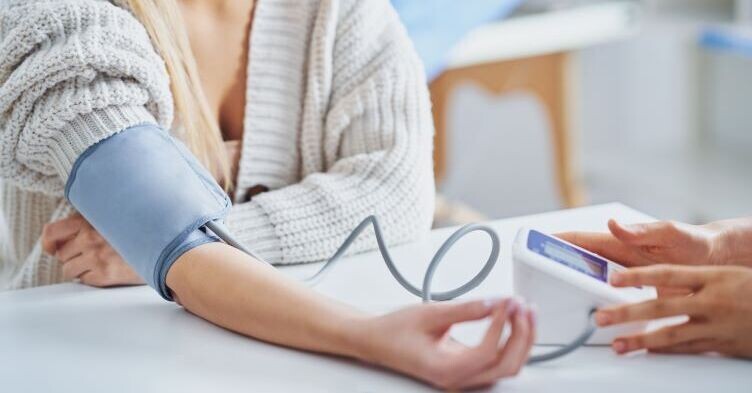How to manage self-harm in primary care

Mental health specialist nurse Karen Lascelles explains how to approach patients who are self-harming and offer appropriate care and support in line with new NICE guidance
Self-harm is a common and complex behaviour that many people, including some healthcare professionals, can find difficult to comprehend. Nurses in all spheres of practice are likely to encounter people who self-harm, so it is important to be aware of the common functions of this behaviour and interventions that might help. New NICE guidance on the assessment, management and prevention of recurrence of self-harm includes recommendations for primary care.1 This article draws on aspects of the guidance to discuss ways community and primary care nurses can respond to self-harm.
Who is at risk of self-harm?
Self-harm involves interlinked biological, social, environmental, cultural, situational and psychological factors. Many people who self-harm have experienced difficult life events, including but not limited to abuse, neglect, bullying, relationship difficulties, displacement, and stress related to work, study or finances. They might also have been exposed to others’ self-harm or suicide, loss and bereavement.2 Rates of self-harm are higher among some groups, including young people,3 LGBTQ+ populations,4 people with mental illness or personality disorders,5,6 people with autism7 and those with ADHD.8 Factors such as substance misuse, deteriorating mental health or anticipated stress might increase the likelihood of self-harm. However, discerning exactly who is at risk of self-harm is difficult; not everyone with known risk factors will self-harm, and individuals who do self-harm cannot (and should not) be squeezed into predefined stereotypes. NICE guidance makes it clear that people who self-harm should be treated in accordance with their individual needs, and assessments should not be reliant on stratification or predictive tools to determine risk.1 In order to offer individualised care effectively, it is important to have an understanding of the reasons why the person might self-harm.
Functions of self-harm
Self-harm is frequently precipitated by strong negative emotions that have become overwhelming for the individual. Alternatively, antecedent states may include detachment and numbness. Self-harm can be a way to regulate emotions or terminate a detached state of mind.
Additional motives include distraction from intrusive thoughts, elicitation of care or attention, self-punishment (and sometimes punishment of others), exerting control over oneself or a situation, or a desire to feel exhilarated where it is a struggle to achieve this sensation in other ways. For many people, self-harm is not suicidal in nature but for others, it may be a suicide attempt. Others might experience suicidal ideation when self-harming, even though it is not intended to be a suicidal act. Indeed it may be a way to avert a suicide attempt. It is important not to assume self-harm is suicidal in nature, although equally it is important to be aware of the link between self-harm and suicide; a previous history of self-harm, particularly in people who have attended hospital following an episode, is strongly associated with suicide.2
Related Article: Diagnosis Connect service will link people to advice from charities
Responding to and assessing people who self-harm
Primary care nurses may encounter patients who openly present with self-harm wounds or disclosures, might suspect a patient’s wound has been self-inflicted even though this has not been disclosed, or may learn that it is a problem for the person during a consultation about something else. If a nurse suspects a patient may have self-harmed it is important they gently but clearly express their concerns and ask if self-harm has occurred.
Responding to or asking about self-harm can feel uncomfortable. This discomfort can be intensified if a clinician holds negative attitudes or beliefs about self-harm. To effectively engage the patient, it is essential to remain person centred and bracket any preconceived ideas. The first contact a person has with a professional regarding their self-harm can be a gateway to securing ongoing support.10 Conversely, people who experience negative primary care contacts are less likely to seek help again in the future.11 Moreover, invalidating responses from healthcare professionals risk amplifying existing negative self-beliefs, which may increase the likelihood of future self-harm.
The fundamentals of good practice are to convey care and kindness, validate individual experiences and instil hope by letting the person know they are not alone and there is support for them.
Nurses need to ask direct questions including about what led up to the self-harm, the method used, the person’s reflections on the self-harm, and whether they are contemplating acting on urges to self-harm or end their lives at the time of the consultation.
As well as exploring the current episode, a history of self-harm and mental health difficulties should be taken. This enables the nurse to decipher whether someone’s self-harm or mental health has worsened. To assist this, it is important to try to establish the person’s usual baseline and a timeline of their self-harming behaviour and associated emotions. For example, asking about their usual self, how they ordinarily deal with stressful situations and whether this has changed, and finding out about patterns of previous self-harm (circumstances, thoughts and feelings) and if this has recently changed. In addition, it will be necessary to enquire about the person’s usual support network and any changes to this, and any impending stressors, such as pressured situations or loss.
Some primary care nurses may feel anxious about this, for example they may worry that their questioning could be perceived as intrusive, or that they will not know how to deal with the responses. Side-stepping these questions, however, will serve only to stymie the opportunity for the person to share their thoughts and feelings. Patients do not mind being asked difficult questions providing this is done in the context of genuine care.12 Asking salient questions does not mean the nurse needs to then offer solutions or therapy, or know what interventions should be prescribed. Rather, it enables them to form the beginnings of an understanding of the individual and the self-harm episode, which can inform decision making about ongoing care.
Family members and carers
Family members and carers often form a key part of a person’s support network and may be able to provide collateral information that can help build a fuller picture of the person, their self-harm and their associated needs. NICE advises that it is important to try to engage family members or carers where appropriate and possible, in order to seek relevant information about the individual and establish their levels of support at home, and also so carers can be given information and support to help them in their caring role.1 Help for family or carers can be essential as they may be uncertain how to support their loved one and are likely to feel frightened about the possible consequences of the self-harm. Caring for a family member who self-harms can have a detrimental impact on caregivers’ health and wellbeing.13
Referral and interventions
Primary care clinicians should consider referral to mental health services following an episode of self-harm, particularly if there are concerns about deteriorating mental health or increasing intensity of self-harming behaviour.1 Mental health support specific to self-harm might include tailored cognitive behavioural therapy-informed interventions.1 Depending on local protocols, nurses might be able to refer directly to mental health services or they may need to request a GP referral. Some mental health providers will have consultation arrangements whereby nurses can call for advice regarding referral.
Related Article: CVD prevention must be national health priority, says report
Patients who self-harm and do not have concomitant mental health conditions may be monitored in primary care as the GP is the central coordinator of care. Regular reviews should take place with these patients to establish whether self-harm and the underlying problems are increasing or decreasing.1
NICE advises early follow-up (within 48 hours) by the service that carried out the initial assessment of a self-harm episode if there are ongoing concerns about the individual’s safety. Aftercare arrangements should be agreed with the patient at the initial assessment, including relevant contact details. Patients and family members or carers should also be given information about self-harm, including self-help resources and support agencies.1
In addition, NICE recommends that professionals consider drawing up a safety plan with the person who has self-harmed, alongside their family member or carer where possible. The aim of a safety plan is to prepare a person for the possibility of future urges to self-harm and equip them with strategies to try and prevent or overcome these urges. Emerging evidence suggests that plans of this nature may be effective in reducing repeat self-harm.14 Safety plans typically involve: identification of early warning signs, triggers and coping strategies; ways in which the person can connect with others for distraction or support; professional and voluntary agencies they can contact for help; and ways in which they can reduce their access to potentially harmful means. There are some helpful NHS-endorsed apps that can assist safety planning, notably DistrACT and STAY ALIVE, and websites such as Mind’s have information to support both patients and family members and carers.
Summary
Many people who self-harm will be seen in primary care. Experiences of these patients suggest that the most valuable aspect of encounters with healthcare professionals are being validated and treated with kindness and respect. Primary care and community nurses are in an important position with regard to supporting patients who self-harm who present in primary care. It is important they are afforded appropriate training and supervision to support them in this role. [Source: Reference 1]
Karen Lascelles is a nurse consultant at Oxford Health NHS Foundation Trust
Related Article: Postnatal contraception advice reduces the risk of back-to-back pregnancies
The guideline referred to in this article was produced by the National Institute for Health and Care Excellence (NICE). The views expressed in this article are those of the authors and not necessarily those of NICE.
References
- NICE. Self-harm: assessment, management and preventing recurrence. London: NICE, 2022. Link
- Townsend E et al. Self-harm and life problems: findings from the multicentre study of self-harm in England. Soc Psychiatry Psychiatr Epidemiol 2016;51(2):183-92. Link
- Townsend E et al. Life problems in children and adolescents who self-harm: findings from the multicentre study of self-harm in England. Child Adolesc Ment Health 2022; 24(4):352-360. Link
- Liu R et al. Prevalence and correlates of non-suicidal self-injury among lesbian, gay, bisexual, and transgender individuals: A systematic review and meta-analysis. Clin Psychol Rev 2019;74:101783. Link
- Hawton K et al. Psychiatric disorders in patients presenting to hospital following self-harm: a systematic review. J Affect Disord 2013;151(3):821-30. Link
- Hawton K et al. Comorbidity of Axis I and Axis II disorders in patients who attempted suicide. Am J Psychiatry 2003;160(8):1494-500. Link
- Cassidy S et al. Advancing our understanding of self-harm, suicidal thoughts and behaviours in autism. J Autism Dev Disord 2020;50:3445-3449. Link
- Allely C. The association of ADHD symptoms to self-harm behaviours: a systematic PRISMA review. BMC Psychiatry 2014;14(1):1-13. Link
- Edmondson A et al. Non-suicidal reasons for self-harm: a systematic review of self-reported accounts. J Affect Disord 2016;191:109-17. Link
- Quinlivan L et al. ‘Relieved to be seen’ – patient and carer experiences of psychosocial assessment in the emergency department following self-harm: qualitative analysis of 102 free-text survey responses. BMJ Open 2021;11(5):e044434. Link
- Mughal F et al. Supporting young people with self-harm behaviour in primary care. Lancet Psychiatry 2019;6(9):724-724. Link
- Deering K et al. Patient perspectives of helpful risk management practices within mental health services. A mixed studies systematic review of primary research. J Psychiatr Ment Health Nurs 2019;26(5-6):185-97. Link
- Ferrey A et al. The impact of self-harm by young people on parents and families: a qualitative study. BMJ Open 2016;6(1):e009631. Link
- Nuij C et al. Safety planning-type interventions for suicide prevention: meta-analysis. Br J Psychiatry 2021;219:419–26. Link

See how our symptom tool can help you make better sense of patient presentations
Click here to search a symptom




